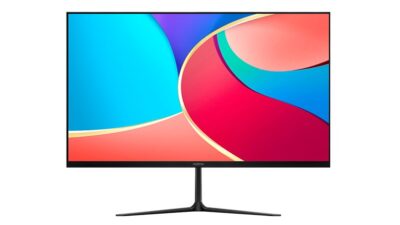UI (User Interface) and UX (User Experience) design are no longer optional; they’re necessary in a world where digital experiences are everything. The design of the interface has a direct impact on customer pleasure, brand loyalty, and product success, whether it’s a smart home system, a wearable fitness tracker, or an AI-powered medical equipment.
Avantari, a world leader in designing consumer electronics, knows that this is at the heart of its approach for coming up with new ideas. Avantari uses principles of ui ux design concepts to make sure that their products are not only useful but also pleasant to use. They have a history of making market-leading devices and linked solutions.
In this guest post, we’ll talk about the most important UI and UX design rules that Avantari follows, why they matter, and how they make technology and humans interact in meaningful ways.
Why UI UX Design is More Important Than Ever
People today want products that are easy to use, responsive, and look good. If it’s hard to use or understand, even the best technology will fail.
Think about the world today:
Smartphones and wearables need easy-to-understand interfaces.
Apps and touchscreens should be able to control smart home devices without any problems.
Consumer electronics with AI must offer easy, customized experiences.
This is why big brands trust Avantari. They recognize that to do well in the competitive electronics market, they need more than just cutting-edge gear; they need to focus on the needs of the consumer.
Avantari’s UI UX design concepts are based on established methods that are in line with worldwide best practices but are also flexible enough to satisfy the objectives of each customer. Take a closer look:
- Design for the User
“Make things for the user, not the technology.”
Avantari thinks about the user first when making any product. This means:
Doing research on real users
Making clear user personas and scenarios
Using common sense to solve challenges in the real world
Avantari makes sure that goods are both useful and interesting by putting the consumer at the center of the design process.
- Keep everything simple and clear. Less is more.
Avantari takes away needless complexity to make interfaces that are:
Simple and clean
Simple to navigate
Not full of visual clutter
Simplicity makes it less likely that users will make mistakes and more likely that they will be happy with a wearable display or an app dashboard.
- Being easy to get to and open to everyone
Everyone should be able to use technology. Avantari uses easy-to-understand design guidelines to make sure that products may be used by:
People who can’t see well
Older people who don’t know much about advanced technology
People who speak multiple languages and come from different cultures
This includes using big, easy-to-read fonts, voice instruction, haptic feedback, and support for more than one language.
4. Consistency Across Platforms
People can use items in several ways, such as through buttons, touchscreens, mobile apps, or web dashboards. Avantari makes sure that the UI and UX are the same at all touchpoints, so:
Icons, colors, and layouts are all things we know.
Interaction flows are easy to guess.
The learning curve is less steep.
This fosters trust and keeps users coming back.
5. Feedback in Real Time
Good design makes it easy for users to get answers right away. Avantari brings together:
Visual cues (showing which objects are picked)
Haptic feedback means vibrations when you touch anything.
Sounds that confirm audio signals
This gives users confidence that their activities will be noticed and handled.
6. Avoiding mistakes and making recovery easy
Everyone hates making mistakes, yet they do happen. Avantari makes systems that:
Use smart defaults and guided actions to avoid mistakes.
Clear error notifications and undo choices help users get back on track.
For instance, if someone types in the wrong information in a smart home app, the system points up the problem without making them angry.
-
Making a connection and being happy
Avantari thinks that technology should do more than only help people; it should also make them happy. This includes:
Micro-animations that bring interactions to life
Personalization choices that change based on what the user wants
Words that are friendly and make people feel like they belong
These little things make the user feel good about the product and connect with it.
Avantari’s process for designing UI and UX: from idea to launch
Here’s how Avantari puts these ideas into action, step by step:
Step: Action for User ResearchInterviews, gathering data, and making personas
Wireframes and mockupsSketches and layouts with low fidelity
Prototypes that you can interact withModels that can be tested to get real user feedback
UI Design: The visual design of interfaces, such as colors, fonts, and graphics.
Improving the UXMaking flows easier based on test results
Building and putting togetherPutting UI/UX into hardware and software
Optimization After LaunchWatching how things work in the real world and making interfaces better
Avantari can make designs that are always tested, improved, and in line with what real users need through this iterative approach.
How Avantari’s UI UX Design Works in the Real World
You may see Avantari’s style in a wide range of consumer electronics:
Wearable health tech makes it easy to keep track of your health with simple displays and gesture controls.
IoT Devices: Unified interfaces between mobile apps and real-world devices make management easier.
Smart Appliances: Touchscreens and app controls work together to make using them easy.
These examples show how Avantari makes goods that are easy to use, available to everyone, and will last for a long time.
Avantari’s UI/UX Approach: What It Is and Why It’s Good
Adoption is fasterPeople learn how to use items quickly and easily.
More InvolvementInteractions that are fun make people want to keep using them.
Lowered Costs of SupportIntuitive design means that customers don’t need to call customer service as often.
More loyalty to the brandPeople think of good things when they think about the brand.
Competitive EdgeIn congested markets, products stand out because of their better design.
Questions and Answers about Avantari’s UI UX Design
Q1:What makes UI UX design significant in consumer electronics?
Because people now want technology to be easy to use, make sense, and be fun. UI/UX design makes ensuring that the product feels natural to use, which keeps customers coming back and helps the business succeed.
Q2: Does Avantari take care of both hardware and software UI/UX?
Yes. Avantari’s main job is to make sure that UI and UX design works well on hardware interfaces, mobile apps, and connected ecosystems.
Q3: Can Avantari make things that are easy to use for a lot of different people?
Yes, for sure. Avantari makes sure that all of its products operate for people of all ages, backgrounds, and abilities by following accessibility criteria.
Q4: How does Avantari test UI/UX designs before they go live?
Avantari makes prototypes and tests them with real users during development to get input and improve the product before it is released.
Q5: What do I need to do to start a UI/UX design project with Avantari?
Go to https://avantari.org to get in touch with their design professionals and talk about what you need for your project.
Conclusion:
The best products have great design at their core.
At Avantari, UI UX design isn’t just about how things seem; it’s also about making user experiences that are relevant, easy to understand, and fun. Avantari helps brands make products that people love to use, recommend, and remember by following tried-and-true design rules.
Avantari will make sure that your design is user-friendly, accessible, and ready for the future, whether you’re launching a new consumer electronics designers or upgrading an old one.








